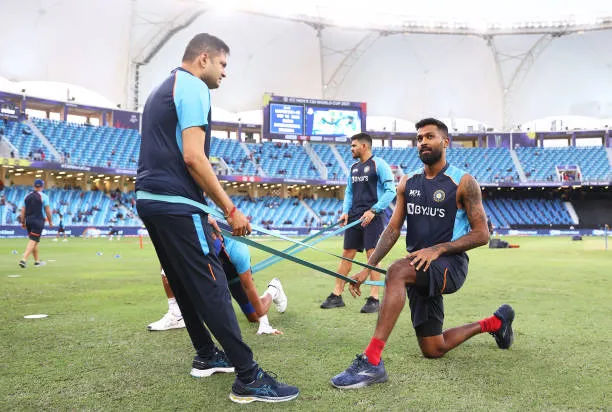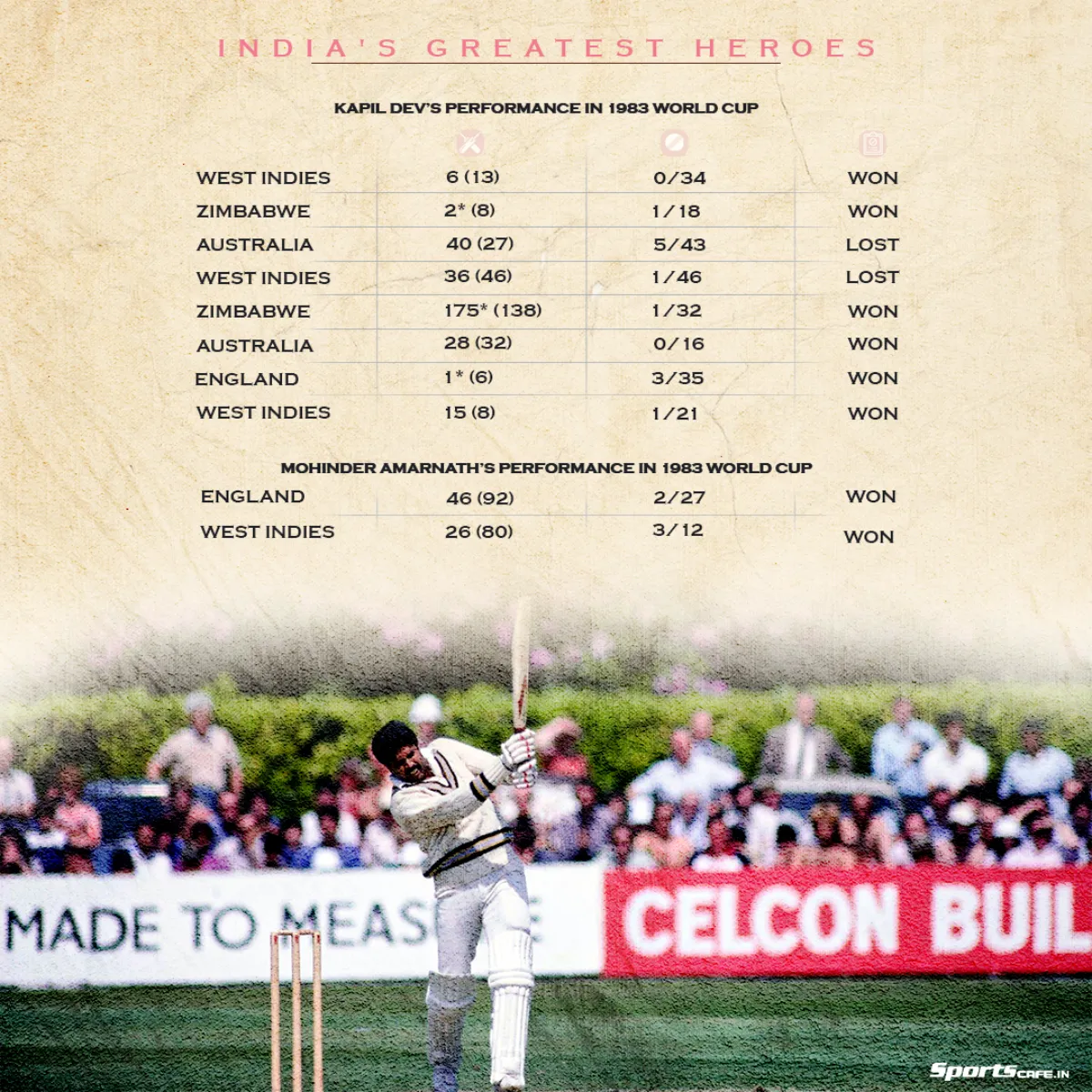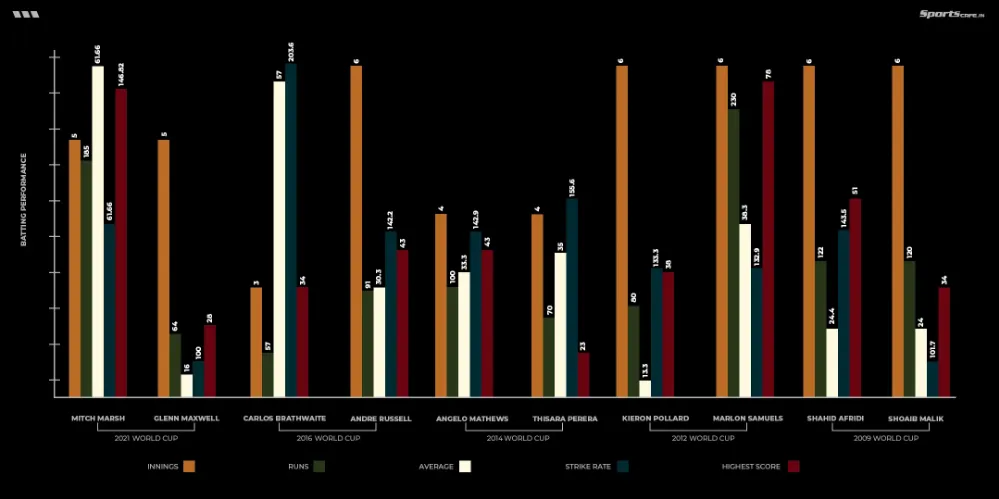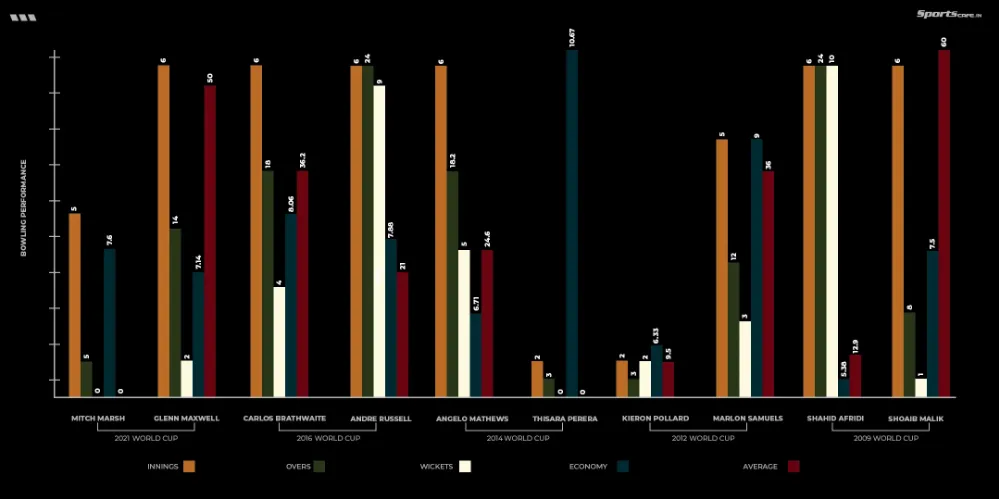When will India start grooming all-round Iron Mans over Hulks to win the World Cup Endgame?

While plenty of former players and experts largely blamed India's bowling unit's woes for their disappointing results at the recently-concluded T20 World Cup, many ignored that they had limited resources to make up for it.
Passionate movie buffs know how Marvel’s Cinematic Universe (MCU) worked at the Avengers: Endgame, and how Iron Man aka Tony Stark led by example to destroy Thanos forever. While the superteam, comprising Captain America, Thor, Hulk, Black Panther, and Spiderman among many others, had important roles to play in the battle, the man with the iron suit who proudly called himself a “genius, billionaire, playboy, philanthropist” because of his multidimensional skillset rose above all difficulties.
Similar to the MCU superheroes, Team India, at present, boasts of having a bunch of superstars in their mix. Comprising the massively adored Virat Kohli and Rohit Sharma alongside the swashbuckling Suryakumar Yadav, the Men in Blue, despite missing Ravindra Jadeja and Jaspirt Bumrah, were considered one of the strong title contenders ahead of the T20 World Cup. Yet, it was Hardik Pandya, in tremendous form with both bat and ball since IPL 2022, who was their USP. In other words, Hardik, with his all-around abilities, was India’s very own Iron Man in Australia.
However, unlike Iron Man, Hardik failed to deliver when it mattered the most. Until that brisk 33-ball 63 against England on Thursday, he made little impact altogether. In his defence, one may blame the BCCI selectors’ strategy, citing that it is unfair to demand a lot from a man who was the lone fast-bowling all-rounder. But the selectors did not have many options either, as India, a country that brags about having the largest talent pool across the world, does not have Hardik-like players.
Even historically, India’s designated all-rounders, except for a few, produced dire performances in showpiece events. Their failures either forced the team to switch from Plan A to Plan B or played decisive roles in their misery en route to getting knocked out of tournaments. And of course, stats do not lie.
In the 1996 World Cup, Manoj Prabhakar scored seven off 36 balls and returned figures of 4-0-47-0 against Sri Lanka. Of course, it played a key part in India’s loss, and as a result, Prabhakar, India’s only all-rounder back then, was dropped for the remaining three matches of the tournament. In Prabhakar’s absence, Sachin Tendulkar and Ajay Jadeja had to make up the 10 overs.
Nevertheless, whenever India’s all-rounders successfully absorbed a certain amount of pressure to perform with both bat and ball, they ended up winning the elusive trophy. Reminiscence of how Kapil Dev’s unbeaten 175 against Zimbabwe turned the tide for India at the 1983 World Cup before Mohinder Amarnath stepped up in the business end to drive the side to glory. The current BCCI President Roger Binny, designated as an all-rounder back then, played his part as well to make all that happen.

 © SportsCafe Graphic Team
© SportsCafe Graphic TeamIn the inaugural T20 World Cup in South Africa, Yuvraj Singh set the stage on fire in Durban by smacking Stuart Broad for six sixes in an over. Yuvraj’s strike rate in the tournament read 235.1 for 135 runs, which played a pivotal role throughout the campaign until India’s famous triumph against Pakistan in the final. Four years later in the ODI World Cup at home, what he did (365 runs, 15 wickets) for India can only be compared with Kapil’s contributions in 1983.
There were some glimpses from some players because they were focusing a lot on both the skills, ultimately with the amount of workload and matches the Indian team plays in three formats, it’s very difficult to manage. That player who has the ability to become a genuine all-rounder, unfortunately, gets injured and he has to compromise or he has to take a decision on either batting or bowling.
VVS Laxman
Anyway, to be clear, getting success whenever all-rounders take the centre stage is not just a myth for India. From Shahid Afridi to Mitchell Marsh, whenever the finest all-rounders from their respective teams live up to the expectations or beyond, they eventually end up lifting the prestigious trophy in each of the T20 World Cup editions. It may sound cliche, but their numbers sum up the story. In other words, all-rounders’ valiant attributions always drive their entire team towards triumph, it’s as simple as that.

 © SportsCafe Graphic Team.
© SportsCafe Graphic Team.You may already know how much fast-tracking modern-day cricket heavily relies on the all-rounders who prefer batting rather than bowling. Look around at the teams and see how the heavyweights, with the sport's evolution, have at least two or more in their rosters at present. While Australia currently have Mitchell Marsh, Marcus Stoinis, and Tim David as additional bowling options if required, Ben Stokes, Liam Livingstone, and Moeen Ali do the same for England. Even New Zealand, who tend to go with five bowling options in T20Is, have Glenn Phillips, Daryl Mitchell, and James Neesham for emergencies. And then you see India’s squad and observe how limited their options are. Surely, in 2022, their playing XI combination needs tweaks.

 © SportsCafe Graphic Team.
© SportsCafe Graphic Team.How have they only got five bowling options when you think 10 or 15 years ago all of India's top six could bowl a little bit – Sachin Tendulkar, Suresh Raina, Virender Sehwag and even Sourav Ganguly?
Michael Vaughan
How can India find out-and-out all-rounders again? That’s the multi-million dollar question to be asked at the moment. Having a long tail might not hurt in the subcontinent, but when they fly to SENA countries, the team falls apart and breaks down into pieces. But why do India struggle to find a natural all-rounder? Former BCCI chief selector MSK Prasad, during his interview with the Scroll, gave a fitting reply to the question.
“If you look at the cricketing culture in general, players are given labels from a young age. You’re either a batsman or a bowler. If they are good at one skill then hardly any attention is given to the aspects. If they prefer batting, they won’t be given much bowling in the nets and vice versa. The mindset is so closed. And what then happens is that if a player is trained in only one aspect of the game, he/she eventually loses interest in the other aspect. So a player should be developed completely,” Prasad told the Scroll in December 2020.
If India are keen to get back to the good old days as they had a decade ago, this old-school formula and the stubborn mindset need to be changed immediately. Otherwise, they will keep failing to match up with other cricketing giants at the grandest of stages, and their ardent fans’ wait for another World Cup title will continue to go further and beyond.

Comments
Sign up or log in to your account to leave comments and reactions
0 Comments